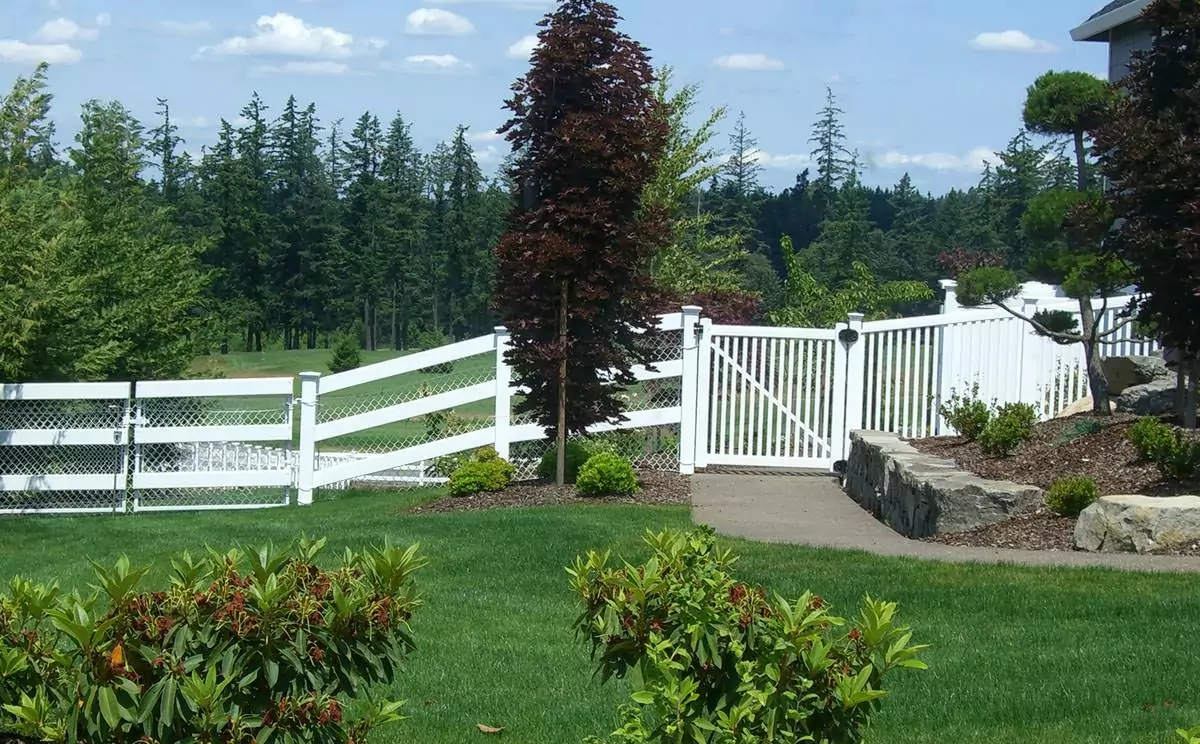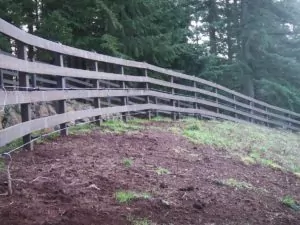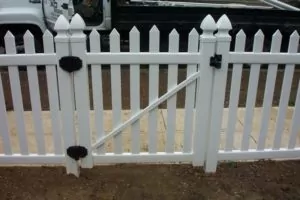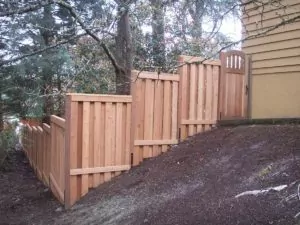When you think of Portland, you probably think of the downtown area or close-in residential neighborhoods. But many of our clients live on larger lots beyond those city limits and have questions about the best ways to fence in their property. Traditional residential fencing doesn’t make sense because of the cost, so we let them know how to build a ranch style fence.
A ranch-style fence, also commonly known as a ranch rail or split rail fence, is a classic and simple fencing style that exudes a rustic and traditional charm. This type of fence is often associated with rural and countryside settings, reminiscent of ranches and farms. The key characteristics of a ranch-style fence include its open design, typically consisting of horizontal rails supported by sturdy vertical posts.
One of the defining features of a ranch-style fence is its low profile. Unlike taller privacy fences, ranch fences are generally lower in height, allowing for an unobstructed view of the surrounding landscape. The design aims to mark property lines and provide a subtle barrier without creating a sense of enclosure.
The open structure of the fence enhances visibility, making it an ideal choice for properties where maintaining a connection with the surroundings is just as important as solidifying property lines. They also do their part in containing larger livestock, making clear boundaries for horses, cows, and other animals.
Building a Ranch Style Fence
Ranch-style fences offer versatility in design, allowing you to choose from various options based on your preferences and needs. The classic split rail design consists of horizontal rails either fastened to or inserted into sturdy vertical posts, offering a rustic charm suitable for rural settings.
For added security, you can attach wire mesh to one side of the fence, which is ideal if you have smaller animals. Some designs incorporate cross-bracing between posts (one diagonal board used from post to post) enhancing stability and visual interest, but this usually isn’t necessary.
If you’re looking for something really rustic, you can build a zig-zag type fence that requires nothing more than stacking the wood you’re working with. If you have a lot of trees, branches, etc. on your property, this is an option. But it will take a lot of wood and time to complete.
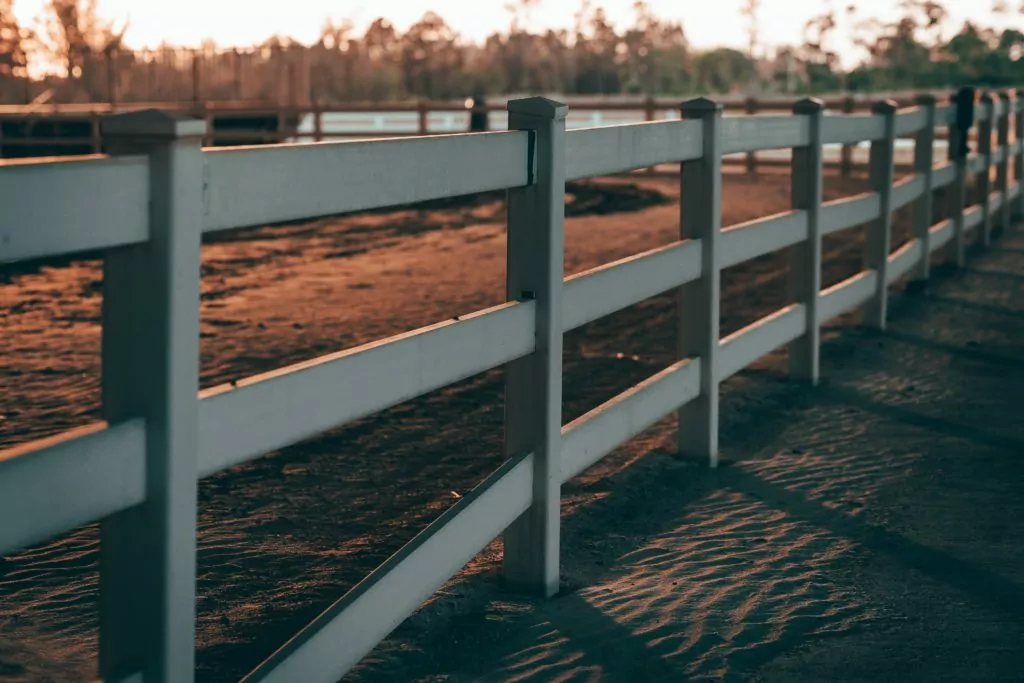
A Step By Step Guide for Building a Ranch Style Fence
For this blog, we’ll concentrate on the standard ranch style fence: three vertical boards attached to posts six or eight feet apart. Building a ranch-style fence can be a rewarding and straightforward project, even for those without extensive fencing experience.
First, a little planning is in order. Once you’ve figured out where to put the fence, start marking where the fence will go by using little stakes for each post, usually six feet apart. We can’t stress this enough: make sure you know where your property line is. You do not want to move hundreds of feet fencing a foot or two down the road because of poor planning.
Make sure the lines are as straight as possible because this will make attaching the boards to the posts that much easier. Now that you know how long the fence is going to be, you can start calculating the materials you need.
For example, if you have 100 feet of fence to build, and posts are six feet apart, you’ll need 17 posts and 300 six foot rails. So what’s the best way to measure long distances? You can buy open reel tape measures that can reach 500 hundred feet.
You’ll also need enough cement to fill 17 post holes and fasteners for each rail (two or three nails or screws for each end). If you’re adding wire mesh, you’ll need enough rolls for 100 feet. Now it’s time to grab a post hole digger (or rent a power auger) and prepare the post holes. You’ll also need a level when you attach the rails to the posts later on.
In most cases, your post holes need to be at least 18 inches deep, but two feet will make the posts more sturdy. Make sure the centers of the holes are six feet apart, or else you’ll need to make little adjustments for each section of fence, which can be a big waste of time. Now it’s time to set the posts.
Set the Posts
Put the post in the center of the hole and then start filling the hole with concrete. Stop about halfway up, reposition the post so it’s level and aligned correctly, and continue to fill the hole with cement. You want the cement to be above grade so water doesn’t pool around the post on rainy days.
Side note–there are a few ways you can fill the holes with cement. You can either mix the cement beforehand and pour into the holes or dump the dry cement directly into the hole and then grab a hose and add the water. Make sure to use a stick or something to “aerate” the mix and get water all the way to the bottom.
Before the cement hardens, do your final positioning of the post and pile up the cement around the base so water can drain away. If allowed to pool around the post, it will rot a wooden post away. Give the cement at least 24 hours to be sufficiently set.
Attach Horizontal Rails
Once the line posts are securely in place, attach the horizontal rails with either nails or screws. At this point, you’ll see why it was so important to make sure the posts were all aligned correctly. You want the rails to lay as flat as possible on the posts to make sure they can be secured properly.
Put one fastener into one end of the rail, then lift the other end of the rail to make sure it’s level, and add two or three fasteners. Go back to the other end and add additional fasteners. Then do that 299 more times! Space them out accordingly: if the fence is four feet high, put the first rail 18 inches up from the ground and then 18-inch gaps for the other two rails.
When that’s finished, you can add the wire mesh if you’d like. This can be done with fencing staples either by hand or by renting specialized tools made specifically for this task. We think power tools are the way to go, especially if you have hundreds of feet of fence to secure.
And that should do it. Don’t forget to add a gate or openings if needed. Even if you don’t have acres of land and livestock to keep safe, ranch style fences can add a down-home feel to an urban home, too.
Not feeling up to the task to build a fence of this size, or just don’t have the time needed for such a large project? Reach out to Pacific Fence and Wire and let us know what you need. We’ve been fencing in properties for more than a century, and we have the materials, tools, and know-how to get the job done right.


